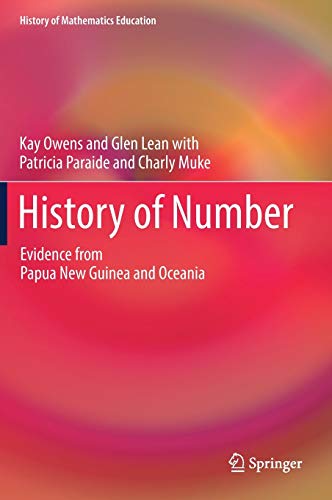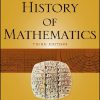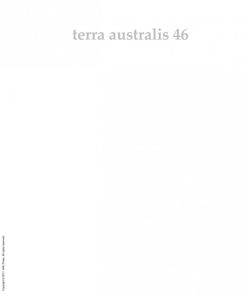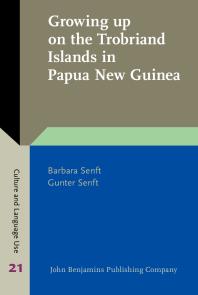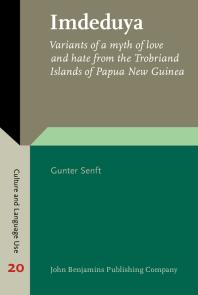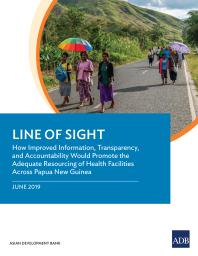History of Number Evidence from Papua New Guinea and Oceania by Kay 9783319454832 3319454838
$50.00 Original price was: $50.00.$25.00Current price is: $25.00.
History of Number Evidence from Papua New Guinea and Oceania Kay Owens – Ebook Instant Download/Delivery ISBN(s): 9783319454832, 3319454838

Product details:
- ISBN 10:3319454838
- ISBN 13: 9783319454832
- Author: Kay
History of Number
Evidence from Papua New Guinea and Oceania
Table contents:
Chapter 1: An Overview of the Studies, Papua New Guinea, Oceania, Languages and Migrations
Introduction
Purpose of the Study
Tour of the Major Studies
Smith’s Studies
Lean’s Study
Muke’s Study in Wahgi Valley, Jiwaka PNG
Paraide’s Study of Tolai Language and Cultural Practices
Owens’ Studies
Saxe’s Studies
Matang’s Studies
Other Studies
Prehistory in New Guinea
The Linguistic Situation
The Papuan (Non-Austronesian) Languages
The Austronesian Languages
Theories of Migration and Prehistory
Papuan Language Migrations
Oceanic Austronesian Language Migrations
Prehistoric Trade and Technology
Summary on Migration and Prehistory
Organisation of the Book
References
Chapter 2: The Languages Studied by Lean and his Analysis of Counting Systems
Introduction
Details of Lean’s Methods and Language Sources
Papua New Guinea
Oceania
The Description and Classification of Data
Spatial Analysis of the Languages of Papua New Guinea
References
Chapter 3: 2-Cycle Systems Including Some Digit Tally Systems
The Existence and Nature of 2-Cycle Systems
Australian 2-Cycle Systems
2-Cycle Systems in New Guinea
Type (a): The “Pure” 2-Cycle
Type (b): With a (2, 5) or (2, 5, 20) Cyclic Pattern
Type (c): With a (2′, 5) or ( 2′, 5, 20) Cyclic Pattern
Type (d): With a (2″, 5, 20) Cyclic Pattern
Type (e): With a (2′, 4, 8) or (2′, 4, 8, 10) Cyclic Pattern
Summary of 2-Cycle Data
Digit Tally Systems – Embedded in Culture and Extending Mathematical Thinking
A (2, 5, 20) Cycle System With Large Numbers
Muke’s Study of Mid-Wahgi (Yu Wooi) Counting in a Cultural Context
Large Numbers
Cultural Beliefs Associated With Number
Conclusion
References
Chapter 4: Body-Part Tally Systems
The Existence of Body-Part Tally Systems
Body-Part Tally Methods in New Guinea
The Distribution of Body-Part Tallies
References
Chapter 5: 5-Cycle Systems
The Existence and Nature of 5-Cycle Systems
5-Cycle Systems in New Guinea and Oceania
Systems With a (5) or (5, 20) Cyclic Patterns
Systems With a (5, 10) or (5, 10, 100) Cyclic Patterns
Systems With a (5, 10, 20) Cyclic Pattern
Summary
References
Chapter 6: 10-Cycle Systems
The Existence and Nature of 10-Cycle Systems
10-Cycle Systems in the Papuan (NAN) Languages
10 Cycle Systems in the AN languages of New Guinea
10-Cycle Systems in Island Melanesia
10-Cycle systems in Polynesia
10-Cycle systems in Micronesia
Summary of 10-Cycle System Data
References
Chapter 7: 4- and 6-Cycle Systems
The Existence and Nature of 4-Cycle Systems
4-Cycle Systems Among the NAN Languages
4-Cycle Systems Among the AN Languages
Summary of 4-Cycle System Data
The Existence and Nature of 6-Cycle Systems
6-Cycle Systems in the NAN Languages
Summary of 6-Cycle System Data and General Commentary
References
Chapter 8: Number and Counting in Context, Classifications and Large Numbers
Introduction
The Importance of Number in Foundational Societies
The Adzera People of the Morobe Province (PNG)
The Grand Valley Dani of West Papua
The Loboda of the Milne Bay Province (PNG)
The Ekagi of the Wissel Lakes (West Papua)
The Melpa of the Western Highlands Province (PNG)
The Mountain Arapesh of the East Sepik Province (PNG)
The Woleai People of Micronesia
Commentary
What Is, And What Is Not, Counted In Foundational Societies?
The Kaugel Valley People of the Western Highlands Province (PNG)
The Kewa of the Southern Highlands Province (PNG)
The People of Kiwai Island, Western Province (PNG)
The People of Rossel Island, Milne Bay Province (PNG)
The Ponam Islanders of the Manus Province (PNG)
The Mengen People of the East New Britain Province (PNG)
The Arosi of the Solomon Islands
The Pukapuka of Central Polynesia
Commentary
Numeral Classification
What is Numeral Classification?
The Geographical Distribution of Classifier Languages
The Nature of Categorisation
The Occurrence of Numeral Classification Among the NAN Languages
Numeral Classification Among the AN Languages of PNG and Oceania
Classifiers in Micronesian Languages Compared to Polynesian Languages
Summary
Large Numbers in the NAN and AN Languages
Large Numbers in Other Indigenous Cultures
Expressing Large Numbers in the NAN Languages
Expressing Large Numbers in the AN Languages of Papua New Guinea
Expressing Large Numbers in Island Melanesia, Polynesia and Micronesia
The Origin and Development of Terms for Large Numbers
References
Chapter 9: Testing the Diffusion Theory
Introduction
The Origin of Diffusion Theories
Seidenberg’s Theory
“The Pure 2-System”
“The neo-2-System”
The 5-and 10-Cycle Systems: The Americas
The 2-, neo-2, and 5-Cycle Systems in Africa
Digit Tallying and Body-Part Tallying
A Genealogy of Counting Systems
Additional Aspects of Seidenberg’s Theory
Counting Systems and Diffusion
Changes Which Occur to Counting Systems
Borrowing and Displacement
Loss of the Numerical Lexis
Types of Change: Commentary and Summary
A Critique of Seidenberg’s Theory
The Nature of Diffusion
Sources and the Lack of Collateral Evidence
Seidenberg’s Theory: Data from Australia, New Guinea, and Oceania
References
Chapter 10: Towards a Prehistory of Number
Introduction
Counting Systems and Tallies of the NAN Languages
Distribution According to Phyla
The West Papuan Phylum
The East Papuan Phylum
The Torricelli Phylum
The Sepik-Ramu Phylum
The Trans New Guinea Phylum (TNG)
Comment on Innovation and Influence on TNG Phylum Language Changes
The Minor Phyla and Isolates
Reconstructing the Prehistory of Number in the NAN Languages
The Papua New Guinea Context
Archaeological, Linguistic and Genetic Studies
Deep and Surface Features of Counting
Evidence of Early Counting Systems
Reconstructing the Prehistory of Number in the AN Languages
The POC Language Community and the Lapita Cultural Complex
Tracing the Fate of the POC Counting System in PNG
Tracing the Fate of the POC Counting System in Island Melanesia, Polynesia, and Micronesia
Summary
Genealogies of Enumeration in New Guinea and Oceania
References
Chapter 11: Indigenous and Western Knowledge
Strengthening an Understanding of Number Through Indigenous Knowledge
Transitions in Education on Number for Indigenous Children
Introduction to Paraide’s Study
Methodology
Results on Tolai Understanding of Number and Measurement
Comparing Tolai and Western Number and Measurement Knowledge in Tolai Activities
Diminishing Indigenous Number Knowledge
Integration of Tolai and Other PNG Indigenous Peoples’ Measurement Knowledge
Integration of Measurement in the Tolais’ Gardening and Trade
References
Chapter 12: Integration of Indigenous Knowledge in Formal Learning Environments
Limited Integration of Indigenous and Western Number Knowledges
Diminishing Indigenous Mathematical Knowledge in the Communities
Teachers’ Diminishing Indigenous Mathematical Knowledge
Resistance to Bilingual Instruction
In Summary
Bilingual Education for Maintenance of Knowledge
Non-Acceptance of Tok Ples Instruction and Integration of Knowledge
Teachers’ Perceptions of Indigenous Number and Measurement Knowledge
The Students’ Home Environments
Activities at Home
Building houses
Gardening
Activies in the garden
Marketing
Earnings
Matang’s Study of Children’s Arithmetic Conceptualisation and Language of Instruction
References
Chapter 13: Rewriting the History of Number from Papua New Guinea and Oceania Evidence
The Data Used as Evidence for this History of Number
Meeting Quality Research Criteria in Historical Studies
Systematic Analysis and Variance
Exemplar Findings of Significance for Our Final Arguments
Counting in a Cultural Context
Indigenous Knowledge Elucidating Number Knowledge in Western School Mathematics
The Role of Groups and Relationships in Indigenous Mathematics
Expanding Understanding of Groups and Place Value
Expanding Understanding of Parts and Wholes
Expanding Representations of Number
Key Issues about the History of Number Raised in This Book
Primary Cycles
Cultural Contexts and Abstract Number
Explaining Similarities and Differences and Critiquing Seidenberg’s Theory
Reconstructing the History of Number
Conclusion
References
Nomenclature
Appendix A Counting System Questionnaire Used By Lean
Purpose of the Questionnaire
Appendix B Details of Counting Systems Discussed in Chapter 8
Introduction
Adzera
Grand Valley Dani
Dobu
Hagen, Medlpa
Mountain Arapesh
Ponam
Mengen
Arosi
Rennellese
Pukapuka
Tongareva
Mota
Ere-Lele-Gele’-Kuruti
Kilivila
Muyuw
Budibud
Nasioi
Siwai Proper
Buin Proper
Yele
Kuot
Appendix C Details on Languages for Chapter 10
Introduction to the Non-Austronesian (NAN) Trans New Guinea (TNG) Systems
NAN Examples from West Papua of 10-Cycle Digit Tally Systems
Baham and Iha
NAN Examples from Madang Province PNG of 10-Cycle Digit Tally Systems
Tani
Ulingan
Medebur
NAN Example from Morobe Province PNG of 10-Cycle and Digit Tally System
Kovai
Mangap
Mutu
Barim
NAN Examples from Central Province, PNG with 10-Cycle System and Neighbouring AN Counting Syste
Magi
Kwale
Sinagoro
Magori
(2, 5, 10) Cycle Patterns
Koita
Koiari
Domu
Motu
Keapara
Sko and Sangke
Fas, Baibai, Biaka, and Kwomtari
Rocky Peak, Iteri, Bo, Nimo
Mianmin
Musian and Amto
West Papua Examples
Meax
Mantion
Yava
Bauzi
Tarunggare
Warenbori and Pauwi
Yuri
Nagatman and Busa – Phylum-Level Isolates
Anggor
Morobe Province Examples
Labu
Mumeng
Mapos Buang
Manga Buang
Vehes and Piu
New Ireland Province, PNG
Lihir
Tomoip
Faga-Uvea, New Caledonia
Enga
Appendix D Details of Body-Part Tally Systems
Nomad (Kubo), Ebolo, and Bedamuni
Appendix E Maps of Languages and Diagram of Proto Oceania
Glen Lean and Kay Owens
Maps
Diagram of Proto-Oceanic
References
About the Authors
Author Index
Subject Index
People also search:
history of number evidence
number evidence
history of number e
history of numbers documentary
evidence numbering system
You may also like…
Mathematics
Number Systems A Path into Rigorous Mathematics 1st Edition by Anthony Kay 9780429602245 0429602243
Politics & Philosophy - Anthropology
Uncategorized
Uncategorized
A Community Based Mangrove Planting Handbook for Papua New Guinea 1st Edition Asian Development Bank
Uncategorized
Uncategorized

